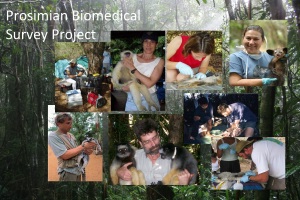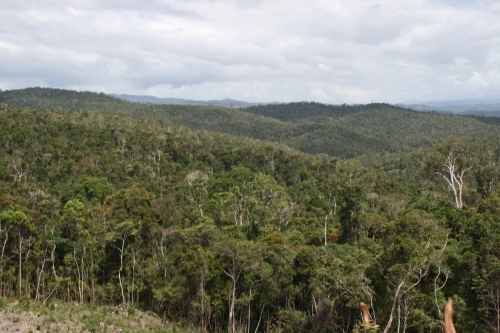The Ambatovy Project
Posted by Randy Junge, MS, DVM, DACZM, Vice President for Animal Health, Columbus Zoo
Situated near Analamazoatra, this area is near the transition from east coast rain forest and the central plateau. Large areas of intact mature forests remain here, but the threats to remaining habitat that are common worldwide are impacting this area as well – expanding human population, agriculture (here primarily rice cultivation), forestry and mining. This area holds large nickel and cobalt deposits, which are being extracted. While mining can be devastating to natural environments, conscientious companies address those issues as possible. Ambatovy Mining has taken significant steps to minimize the impact of the mining project, and that is where we come in. Under the Ambatovy Project Lemur Management Plan, efforts are underway to minimize the impact on the 14 local lemur species.

Veterinarians working with the Prosimian biomedical Survey Project monitor lemur health in Madagascar
The Prosimian Biomedical Survey Project (PBSP) has been involved in lemur health and conservation medicine research in Madagascar since 2000. Team members partner with researchers to assist in the field, and collect health and nutritional data on lemurs island – wide. The data is analyzed and put into a database (now with nearly 750 individuals of 35 species) and has published 15 scientific articles generated by this data. The information is shared with local conservation agencies to assist with the management of these sites.
AMSA has partnered with PBSP to assist with the management at this site. Our goal is to evaluate lemurs before, during, and after the mining project to scientifically assess the impact and the animals’ ability to adapt. The project is just getting underway, and much of our focus now is capturing, performing health assessments, radiocollaring, and relocating lemurs. The company uses paced and directional clearing to allow animals of all species to move voluntarily from the site. However, some individuals just don’t get it, and have to be ‘helped’.


